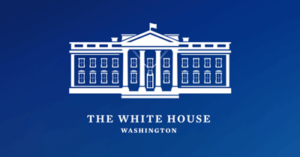Introduction
In response to growing concerns about the security of U.S. research and development (R&D) amidst global competition, the Biden-Harris Administration has issued a memorandum outlining new measures to bolster research security without compromising the collaborative nature of the American scientific community. Here’s a breakdown of the key points and implications of this directive.
A Strategic Shift in Research Security
The memorandum, issued by the President’s Office of Science and Technology Policy (OSTP), directly responds to the changing global landscape characterized by intense economic and military competition. Recognizing the need to protect U.S. R&D from potential exploitation, the administration is implementing National Security Presidential Memorandum-33 (NSPM-33) and CHIPS and Science Act provisions.
Certification Requirements for Research Institutions
Under this new directive, federal research agencies must ensure that certain research institutions, referred to as “covered institutions,” certify the establishment and operation of comprehensive research security programs. These programs are mandated to include four critical elements:
- Cybersecurity: Institutions must implement cybersecurity measures in line with resources provided by the National Institute of Standards and Technology (NIST).
- Foreign Travel Security: Periodic training on foreign travel security is required for individuals engaged in international travel related to research activities.
- Research Security Training: All covered individuals must undergo training to understand and mitigate research security threats.
- Export Control Training: Training on U.S. export control laws and compliance is mandatory for those involved with export-controlled technologies.
Emphasis on Fairness and Non-Discrimination
A cornerstone of this directive is the emphasis on maintaining fairness and non-discrimination. The administration has made it clear that research security measures should not lead to xenophobia or discrimination based on race, ethnicity, or national origin. Institutions must safeguard the rights of all researchers, students, and staff.
Flexibility and Support for Institutions
The directive allows institutions to tailor their research security programs to their needs, leveraging existing programs to minimize administrative burdens. Additionally, federal agencies are encouraged to offer technical assistance and resources to help institutions comply with the new requirements.
Implementation Timeline
Federal research agencies have six months to submit plans for updating their policies to align with this guidance. Institutions will then have up to 18 months to implement the new requirements, ensuring ample time for adjustment and compliance.
Conclusion
This memorandum represents a significant step in protecting the U.S. R&D enterprise from emerging threats while preserving the open and collaborative environment that has long been its strength. By balancing security with inclusivity and support, the Biden-Harris Administration aims to reinforce America’s position as a global leader in science and technology.
For more detailed information, please refer to the OSTP’s full memorandum.







